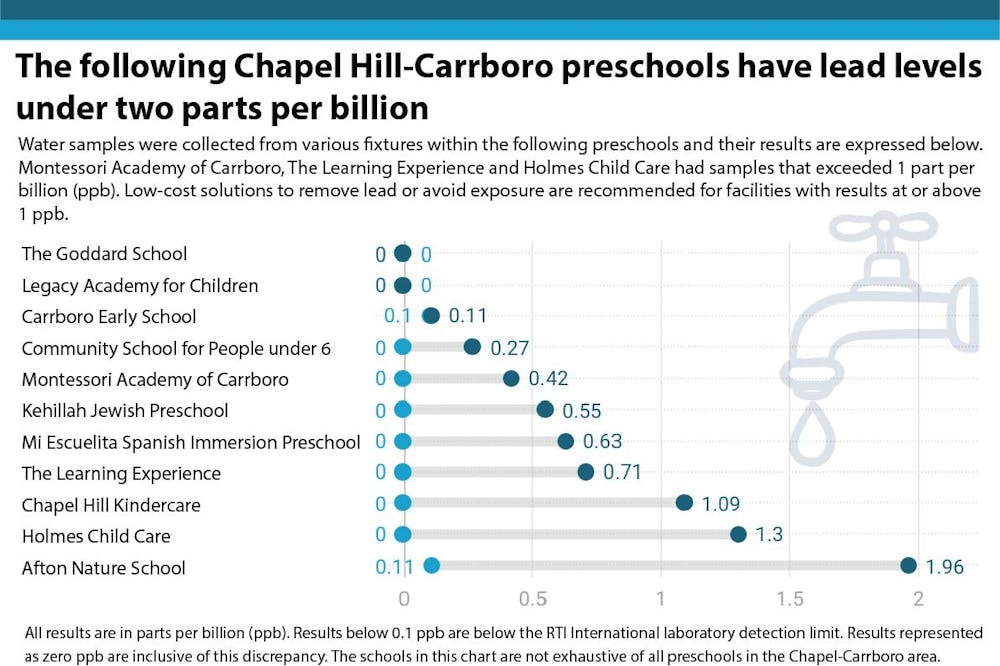As the local community watches UNC grapple with detectable lead levels in the drinking water of over 125 buildings, some questions have been raised about the safety of other educational institutions.
Data from Clean Water for Carolina Kids shows that some preschools in the Chapel Hill-Carrboro area are also seeing perceptible levels — although they are generally lower than the University.
Licensed childcare centers are required by the North Carolina Department of Health and Human Services to test all fixtures used for drinking and cooking purposes for lead.
Tests must occur every three years, and sources that register concentrations of lead with 10 parts per billion (ppb) or above cannot be used for consumption.
Last year, North Carolina expanded testing to public schools. However, requirements do not exist for most of North Carolina’s other citizens.
“In terms of colleges and universities, along with anybody else that lives in a house, there's still no requirements to test for lead at the taps, at drinking and cooking points nationally, and there’s still no enforceable health-based standards,” Jennifer Redmon, the director of environmental health and water quality at RTI International — which leads the Clean Water for Carolina Kids program — said.
Preschools must submit water samples to a certified laboratory capable of analyzing for lead at very small levels, and must notify the NCDHHS with all findings.
“The process is relatively simple using testing kits from Clean Water for Carolina Kids,” Jeanne Wakefield, the executive director at Chapel Hill Cooperative Preschool, said in an email.
According to Wakefield, Chapel Hill Cooperative Preschool tested its water in 2021 and is due to test again in 2024. She added that nothing concerning was found, and that the preschool follows all required testing protocols.




